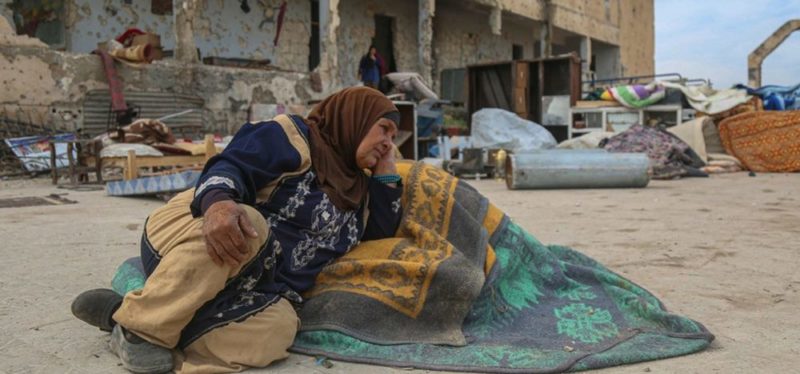I stumbled onto a new spiritual practice during the COVID shutdown last spring. Maybe you’d like to give it a try.
A little background first. For years I’ve written about lectio divina—the slow, contemplative reading of sacred texts, with pauses to listen and ponder when a particular phrase strikes a chord. Apparently there’s a version of this for visual media too: visio divina.
A few months ago, like so many people, I was growing anxious over certain aspects of the shutdown. The more I thought about them, the more I realized they’re first-world problems: figuring out whether to wear a mask in each unique situation, wishing I could go out for dinner, that sort of thing. As a way to gain proper perspective, I hit on a thought experiment: think of the most ravaged place on earth, and learn about the people who struggle to live there.
Syria’s Idlib province leapt to mind: the last bastion of rebel holdouts against a murderous regime in a nine-year civil war. An entire province bombed to rubble by its own president. Look at any news footage from Idlib and you’d swear no one lived there.
So I ran web searches for stories of people in Idlib. As it turns out, many still live there, trying to cobble together their daily lives while on constant high alert for sudden danger. The articles were compelling but the photos had their own stories to tell. The longer I looked at them, the more I experienced visio divina at work.
Take this example from a UN site (photo © UNOCHA):
Caption: In Idlib, Syria, a displaced woman sits on the floor outside the damaged school that she now lives in.
On one level it’s the picture of despair, as you’d expect from Idlib. But while gazing at it I started to notice other things. A great deal of rubble lies about—it’s a war zone, after all—but notice how it’s all cleared to one side. Someone in Idlib, possibly the people living in the school, thought it important to put some order to the rubble. That’s what people do to keep daily life moving: they tidy up. But the resilience it must have taken to keep daily life moving took my breath away.
There’s more. Who, for instance, is the person standing on the porch in the background? Maybe she’s family to the woman in the foreground, or maybe they’re former strangers who’ve taken each other into their makeshift homes during a catastrophe. (Maybe that’s not a porch but instead a bombed-out hallway.) Again, it’s what people do: show compassion.
I have zero desire to romanticize the conflict. I’ve read about the horrific conditions, the doctor who kisses his wife goodbye each morning without knowing if he’ll ever see her again, the teen girl who chokes back her terror to comfort her younger siblings. It wasn’t until I started gazing at these photos that I saw the raw and beautiful traits—like resilience, like compassion—that make us human, that we persist in upholding.
What do you see?


Leave A Comment